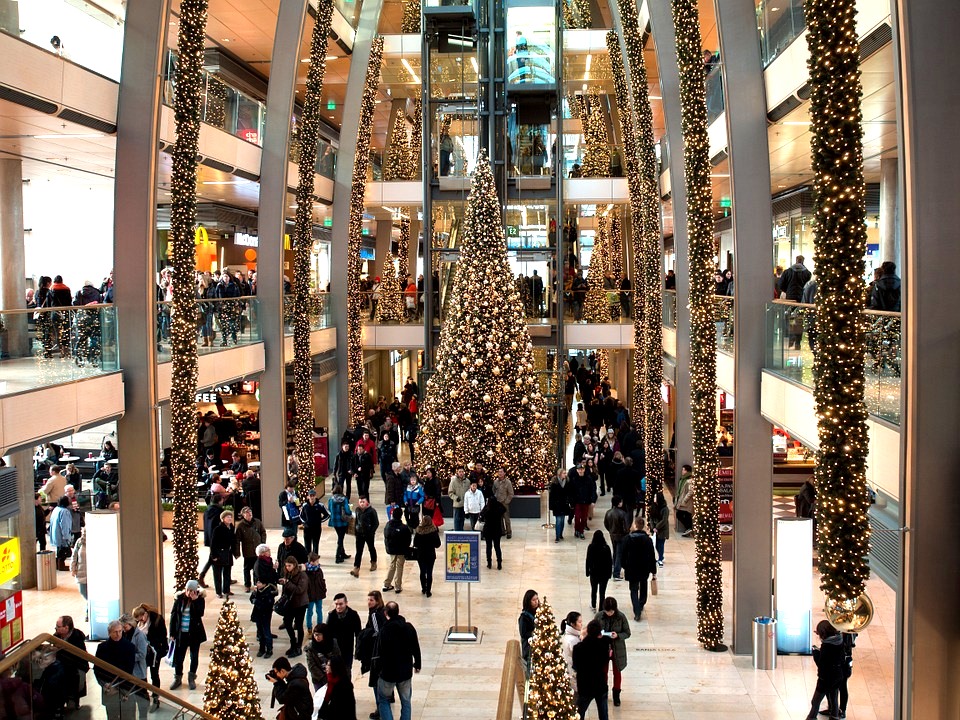As you’re picking out the best variety pack of candies in a supermarket, you notice the top of a Christmas tree in the next aisle. Curious, you push your cart to the next aisle and witness a lot of commercialization of Christmas.
As you quickly scan the aisle, you see row after row of Christmas trees and ornaments and tinsel lining the shelves. All this now starts, almost a month before Christmas and you start thinking, when did Christmas become so commercialized?
It seems like Christmas is becoming more and more commercialized with every passing year. Decorations, trees, and lights are displayed earlier and earlier. And Christmas ads are becoming more and more frequent.
Once Christmas is near, all you’ll see is sales, sales, and more Christmas sales. In the next few years, commercialized Christmas will have decorations out by August.
You can get a good deal on a Christmas tree as you pick stuff up for the pool party.
Sadly, this reality is becoming more and truer.
The reason why Christmas is commercialized is that there is a lot of money to be made. People buy presents during Christmas. People have parties and look forward to spending time with friends and family.
It’s the time for consumers to spend money and retailers are using it to their benefit.
A quick search on Google and you’ll find thousands of results to why Christmas is commercialized. Some articles argue that there’s a religious reason while some say its all a scheme made up by retailers to pad their pockets with higher profits.
But one thing that all these articles agree on is the public’s response.
People are happy around the holidays. People like their family traditions. They like planning the annual Christmas party, putting up the Christmas tree, decorating the house, and giving presents to family and friends.
All these activities lead to commercialism.
So, the reason why Christmas is commercialized boils down to one intermediate result: supply and demand.
But How Did We Ever Get Here?
According to Bloomberg View, many people believe that Christmas started as “a pure holiday.” However, Bloomberg argues,
“…there is little evidence that such a day ever existed — and certainly not in the U.S. In fact, the American Christmas ascended to its central place on the national calendar as a result of an intense marriage between sentiment and commerce.”
Christmas has been a commercialized holiday since the 1900s.
Newspaper ads, storefronts, and flyers were decorated with Christmas cheer every Christmas season. They advertised new toys, special deals, and limited time offers to get people to shop.
During the 1800s, a more subtle form of commercialization existed.
People celebrated Christmas with church services and small gatherings. But as the American Dream grew in popularity, so did the commercialization of Christmas.
As the 1900s approached, leisurely homemakers started to add more flair to the holidays with decorations and parties. These upper and middle-class families began to bring their holiday cheer to church.
As a result, churches have special ceremonies and pageants with music and decorations to celebrate the Christmas season.
How Has It Evolved Since?
In 1823, Clement Clark Moore created “A Visit from St. Nicholas.” and a few years later Thomas Nast engraved his version of Santa Clause for Harper’s Weekly magazine.
These two publicized work drew attention to Christmas and marked the beginning of hyper-commercialization for Christmas. Alongside, Nast’s engraving other magazines printed heart-warming Christmas stories, DIY Christmas gifts, and proper holiday etiquettes for the public to read.
When these Christmas themed magazines started flying off the shelves, other businesses followed suit. The most remarkable instance is Godey’s Lady’s Book’s iconic picture of a family and their Christmas tree.
The image became so popular that Christmas trees became a family tradition by the late 1800s.
Christmas trees aren’t complete without ornaments and tinsel, so those industries flourished as well. As a result, Christmas decorations become more elaborate with candles, flowers, garlands, and ornaments.
Seeing the popular holiday grow, many businesses started to capitalize on Christmas. One of these companies was F.W. Woolworth.
In 1880, Woolworth ordered a small inventory of glass ornaments from Germany to sell at his store. His whole stock sold in only two days.
Christmas decorations didn’t stop inside the home. Soon after the influx of Christmas décor in stores, families started decorating their porches and lawns with Christmas cheer.
And the cheer didn’t stop at homes.
Decorating storefronts for the Christmas season became a holiday phenomenon. In 1920, Coca-cola created advertisements featuring Santa Clause for the Christmas season.
The images of Santa Clause became so popular that Coca-cola hired Haddon Sundblom to illustrate a more heart-warming picture of Santa Clause.
By 1931, the classic Santa Clause image we all know and love is seen everywhere from ads to magazines and newspapers, such as National Geographic and The New Yorker.
In 1939, another famous image came into the media.
Robert L. May created Rudolph, the red-nosed reindeer. May gave away 2 million copies of this story. This is a considerable feat considering 50,000 copies was the best selling story at that time.
Fast forward a few decades and smart marketing departments createBlack Friday, Cyber Monday, and Small Business Saturday to further commercialize Christmas.
We cannot discuss the commercialization of Christmas without mentioning these favorite shopping days. The term Black Friday appeared in 1961. Black Friday became a popular shopping day by the 1980s.
The term refers to retailer profits.
Before the holiday shopping season, many retailers are in the red, which means they have not hit their profit margins for the year.
Black Friday marks the first day from which they get “in the black” or other words “hit their profit margins.” The commercialization of Christmas can be seen on Black Friday as sales start earlier and earlier.
In 2016, Black Friday Deals started at 2 PM on Thanksgiving Day.
Much like Black Friday, Cyber Monday and Small Business Saturday is a result of marketing. Cyber Monday became famous in 2005, and Small Business Saturday started in 2010.
How Do We See This Today?
The industry grew from there.
Millions of dollars are spent every year on Christmas trees, ornaments, tinsel, garlands, cards, and festive cookies.
We hate to admit it, but we love to sing along to our favorite Christmas songs once December is here.
We also like the warm feeling of sitting by the fire with our friends and family around us. Once we’re together, we love to watch our favorite Christmas movies on TV and laugh at all the familiar scenes.
The commercialization of Christmas has become a tradition.
Can you imagine not having a Christmas tree? Or seeing all the colorful ornament selections in every store, you go to? Can you live without watching all those classic Christmas tales and movies every year?
Well, the answer is clear.
Families have made the commercialization of Christmas a tradition. We can’t have Christmas without the Christmas Parade at Disney World.
We can’t imagine seeing a Christmas tree decked out in homemade ornaments, tinsel, and rainbow-colored lights. And who can forget about those insane tacky light tours around town?
We all have a family tradition around Christmas, so let’s embrace the commercialization of Christmas together over a warm cup of cider.
10 Ideas for Single Parents to Have The Most Memorable Christmas!
Please Share with Your Friends and Family














